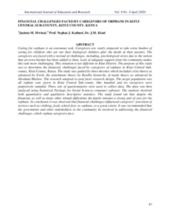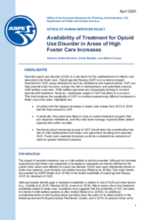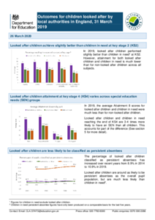Displaying 431 - 440 of 2214
The purpose of this study was to determine the financial challenges faced by caregivers of orphans in Kitui Central Subcounty, Kitui County, Kenya.
This paper reports findings from an innovative arts‐based intervention with Looked After Children and young people and concludes that holding these competing value sets in creative tension is central to the success of the programme in helping young people to cope with and contest social harm.
This article presents findings from an exploratory in-depth qualitative research project with the objective of exploring the knowledge that social workers use to make decisions regarding permanency arrangements for Looked after Children.
This study intended to identify factors associated with receipt of mental health services by caregivers substantiated for maltreatment.
This paper presents a participatory research study that explored the experiences of a group of Aboriginal Australian parents who have had their children removed by child protection authorities in one Australian state, New South Wales.
Parental opioid use disorder (OUD) is a risk factor for the maltreatment of children and placement into foster care. This brief explores the availability of opioid agonist therapy (OAT) in U.S. counties experiencing different increases in foster care entry rates.
This project aimed to identify factors that might explain the ‘attainment gap’ for Children in Need (CIN) and Children in Care (CIC) in England.
The objective of this study is to identify situations and behaviors occurring during contact visits that are likely to have an impact on a foster child's well‐being.
In this study, the authors examined (a) whether institutional rearing is associated with continued social communication (SC) deficits into adolescence; (b) whether early placement into foster care mitigates risk for SC problems; and (c) associations between SC and psychopathology from middle childhood (age 8) to adolescence (age 16).
This statistical release provides national and local authority (LA) level information on the outcomes for children who have been looked after continuously for at least 12 months at 31 March 2019, by local authorities in England.




